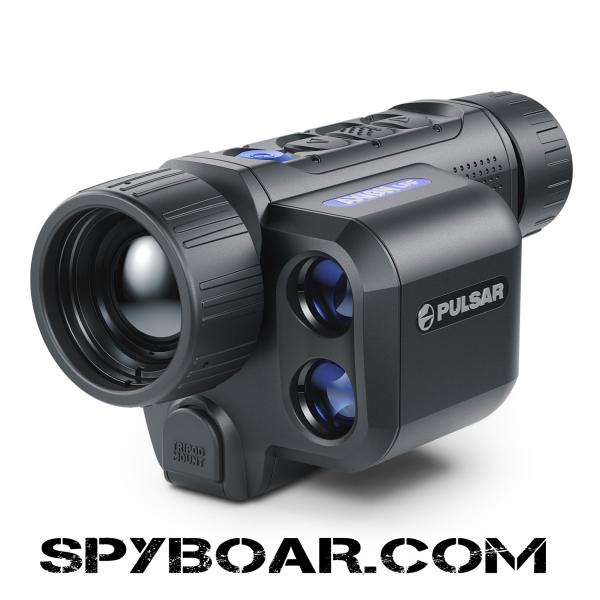


The new generation camera leads you to a new level of thermal spotting.


The Pulsar Axion XQ LRF Thermal Imaging Monocular offers highly detailed thermal imaging observation and recording within a quite compact and lightweight size. The detection range is of up to 1350m, with a native magnification of 3.5x, and with another 4x digital zoom for a total of 14.0x magnification.
One of the features of the Axion XQ LRF is a 384x288 17µm <40mK NETD thermal sensor. The NETD (Noise Equivalent of Temperature Differential), expressed in millikelvins (mK) is one of the most important parameters for thermal sensors as it describes their sensitivity. The lower the NETD value, the higher the sensitivity.
In existing different series models the NETD value was sub 60mK. The new <40mK sensor, the device performs a better image in conditions where there is a low-temperature difference such as during rainfall, fog or cold mornings. These environmental conditions are the hardest for thermal imagers and this new sensor provides a clearer image.
The Axion XQ LRF is perfectly eqiupped with a robust magnesium bodyshell, an IPX7 protection rating (fully waterproof), 1024x768 AMOLED HD micro-display and works perfectly well in both hot & freezing weather.
It is equipped with internal laser rangefinder, which helps aid observers in estimating target distances with the height of known objects. in advance, the unit has up to eight colour palettes to help you enhance observation in varying conditions.
Picture-in-Picture (PiP) mode, upon activation, displays a second image with magnification in the top part of the Axion’s display screen. This small image helps to zoom in on a target while retaining the rest of the field of view, maximising situational awareness.
The Axion has an instant start-up and an instant ‘display-off’ mode, which is beneficial to saving energy and prolonging the operation time and its dedicated B-Pack Mini Power System. The APS5 Battery Pack system gives you an ultra-lightweight, quick-change power option that provides hours of operating time. APS Battery Packs can be charged by USB through its intended unit or an APS Battery Charger. (Please note that the Axion XQ38 & LRF XQ38 utilise a different battery & charger to the rest of the Axion Series).